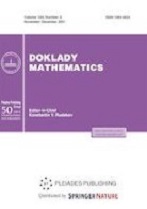|
SPECIAL ISSUE: ARTIFICIAL INTELLIGENCE AND MACHINE LEARNING TECHNOLOGIES
Graph models for contextual intention prediction in dialog systems
D. P. Kuznetsov, D. R. Ledneva
Moscow Institute of Physics and Technology (National Research University), Dolgoprudny, Russian Federation
Abstract:
The paper introduces a novel methodology for predicting intentions in dialogue systems through a graph-based approach. This methodology involves constructing graph structures that represent dialogues, thus capturing contextual information effectively. By analyzing results from various open and closed domain datasets, the authors demonstrate the substantial enhancement in intention prediction accuracy achieved by combining graph models with text encoders. The primary focus of the study revolves around assessing the impact of diverse graph architectures and encoders on the performance of the proposed technique. Through empirical evaluation, the experimental outcomes affirm the superiority of graph neural networks in terms of both Recall@k(MAR) metric and computational resources when compared to alternative methods. This research uncovers a novel avenue for intention prediction in dialogue systems by leveraging graph-based representations.
Keywords:
intent prediction, dialogue systems, graph neural networks.
Citation:
D. P. Kuznetsov, D. R. Ledneva, “Graph models for contextual intention prediction in dialog systems”, Dokl. RAN. Math. Inf. Proc. Upr., 514:2 (2023), 270–288; Dokl. Math., 108:suppl. 2 (2023), S399–S415
Linking options:
https://www.mathnet.ru/eng/danma472 https://www.mathnet.ru/eng/danma/v514/i2/p270
|


|





 Contact us:
Contact us: Terms of Use
Terms of Use
 Registration to the website
Registration to the website Logotypes
Logotypes








 Citation in format
Citation in format 